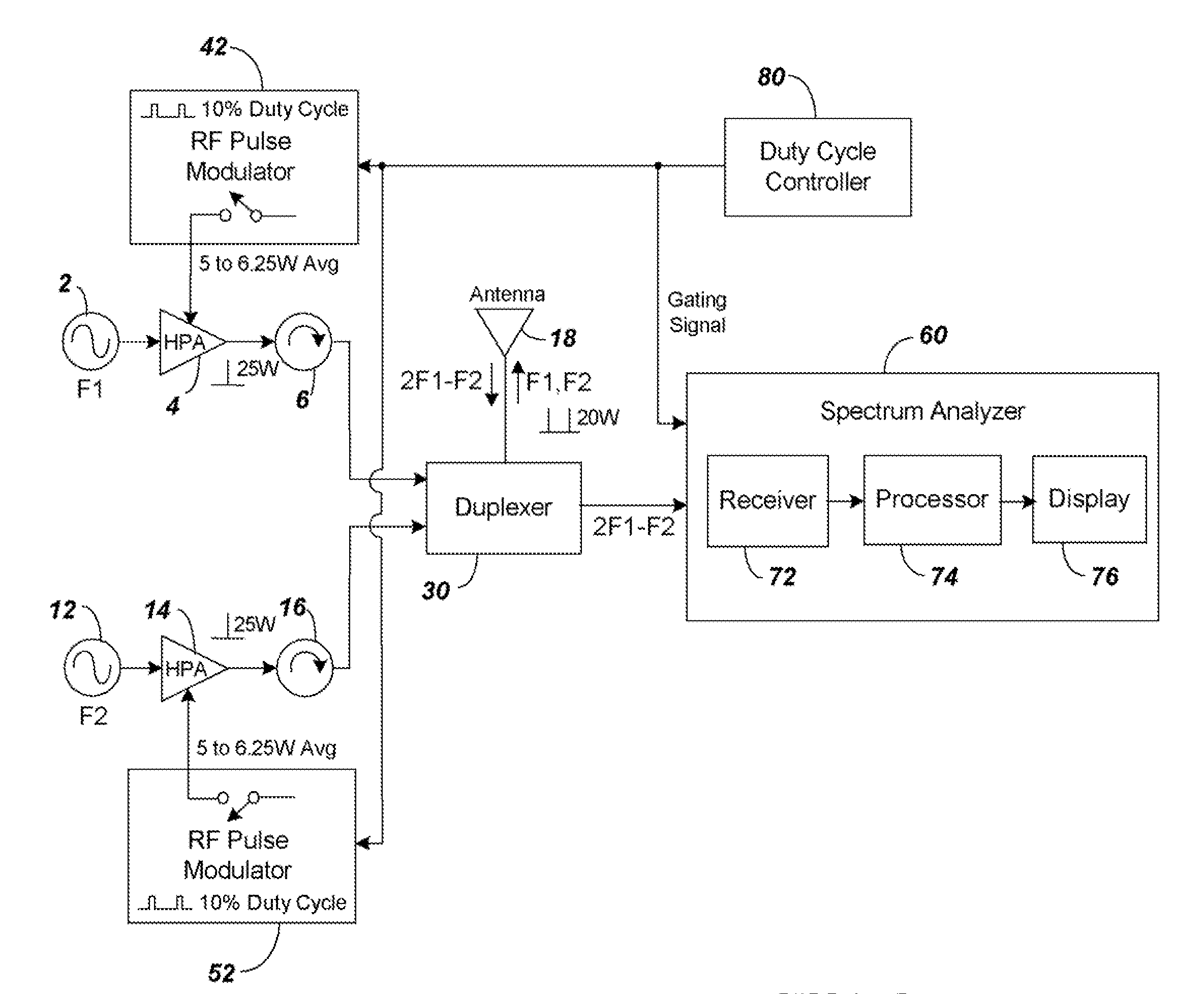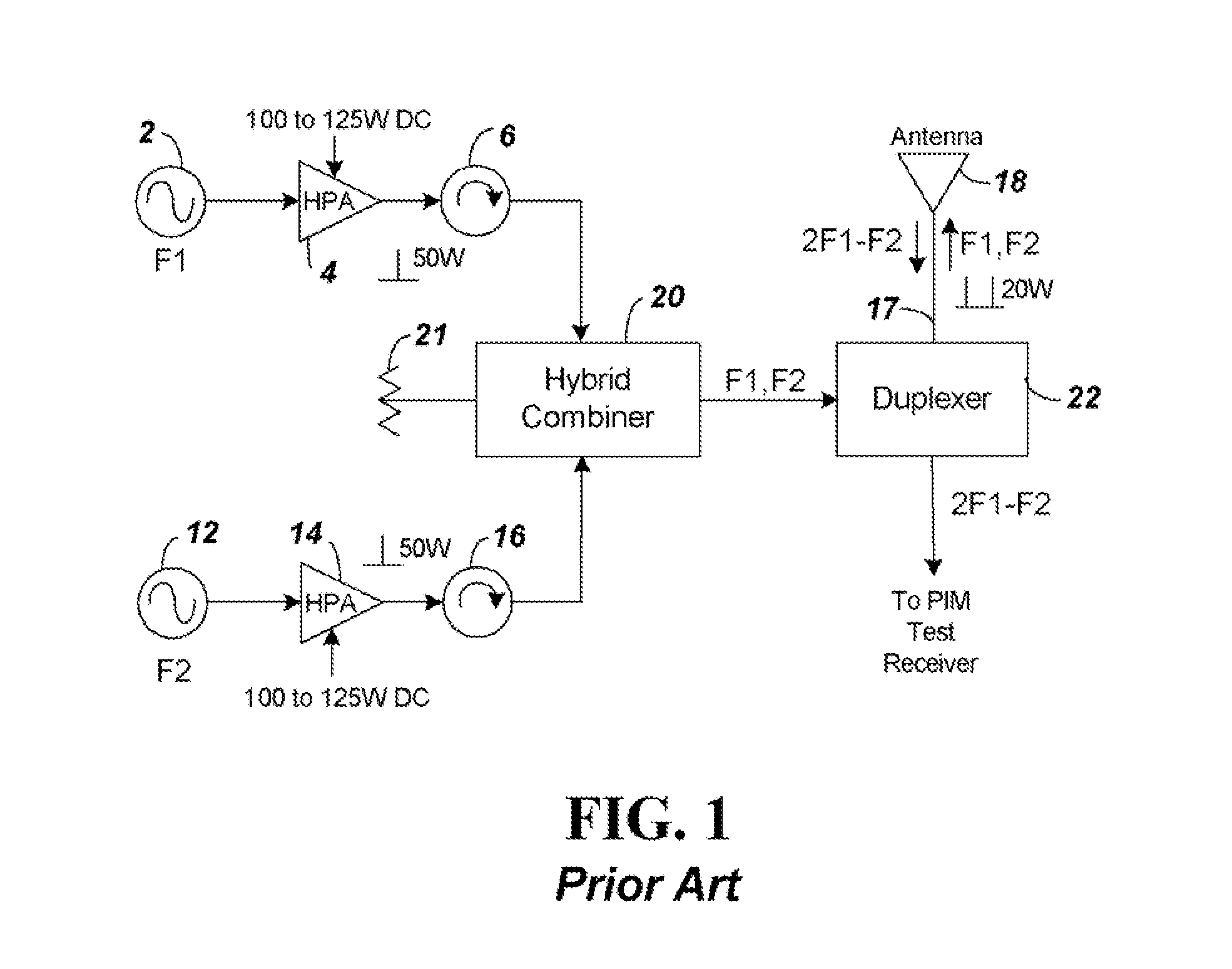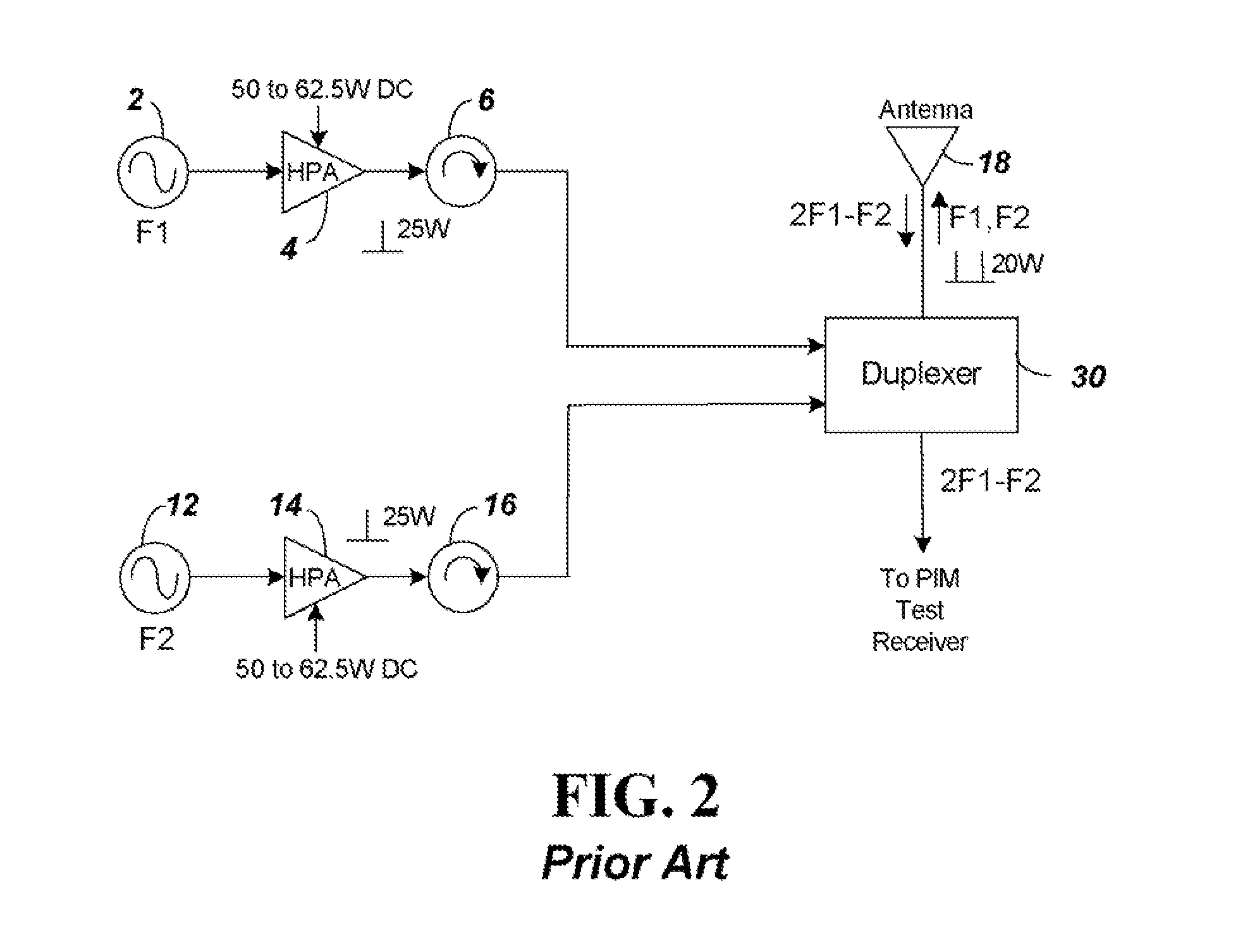Pulse modulated PIM measurement instrument
a measurement instrument and pulse technology, applied in the direction of instruments, process and machine control, line-transmission details, etc., can solve the problems of interference with system operation, unwanted signals, and troublesome combined 3sup>rd /sup>order response, etc., to achieve significant power saving, weight reduction, and size reduction
- Summary
- Abstract
- Description
- Claims
- Application Information
AI Technical Summary
Benefits of technology
Problems solved by technology
Method used
Image
Examples
Embodiment Construction
[0024]FIG. 3 shows a PIM test circuit according to embodiments of the present invention. The circuit of FIG. 3 modifies the circuitry of FIG. 2 by adding pulse width modulators 42 and 52 to provide DC power to the amplifiers 4 and 14. The pulse width modulators 42 and 52 create a reduction of DC Power by the ratio of their ON to OFF time. Although the pulse width modulators 42 and 52 are shown in FIG. 3 added to the circuitry of FIG. 2, it is understood that similar pulse width modulators could be used with the circuitry of FIG. 1 to obtain a power savings.
[0025]The duty cycle for the pulse width modulators is selected to set the DC power consumption. For example, a duty cycle of 10% will reduce the total average power consumption down to 10% of the amount without modulating the peak output power. For the 100-125 average Watts consumed in the circuit of FIG. 1, by supplying power to power amplifiers 4 and 14 with pulse width modulators having a 10% duty cycle, average power consumed...
PUM
 Login to View More
Login to View More Abstract
Description
Claims
Application Information
 Login to View More
Login to View More - R&D
- Intellectual Property
- Life Sciences
- Materials
- Tech Scout
- Unparalleled Data Quality
- Higher Quality Content
- 60% Fewer Hallucinations
Browse by: Latest US Patents, China's latest patents, Technical Efficacy Thesaurus, Application Domain, Technology Topic, Popular Technical Reports.
© 2025 PatSnap. All rights reserved.Legal|Privacy policy|Modern Slavery Act Transparency Statement|Sitemap|About US| Contact US: help@patsnap.com



